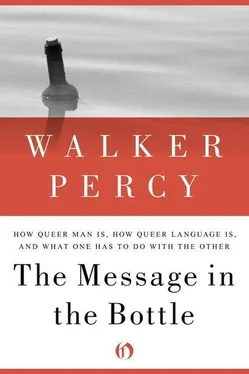Anthropology must be willing to accept not only functional criteria: what social and biological purpose is served by this or that cultural element; or aesthetic criteria: whether or not a cultural element conforms to the prevailing cultural pattern and contributes to “cultural integration,” but a normative criterion as well. It must not be afraid to deal with the fact that a man may flourish by one scale and languish by another — that he may be a good organism and an integrated culture member and at the same time live a trivial and anonymous life. As Bidney has expressed it, “In evaluating a given culture, the essential problems are how it is integrated and for what is it integrated, not is it integrated.”
It is not enough to study a culture element with only the objective of discovering its immanent role in a culture. It is also necessary to judge it according to whether it does or does not contribute to the development of the potentialities of human nature. This does not imply ethnocentrism; it does imply a recognition of a common human nature with the attendant possibilities of development and deterioration. It is not enough, for example, to study the function of the Kula among Trobriand Islanders, the complex system of exchanging beads and shell bracelets (though Malinowski’s study is magnificent and one sympathizes with his attack on those who refuse to enter into the inner spirit of a culture). One cannot defer indefinitely a normative decision about the Kula — would or would not the islanders be better occupied doing something else? A chemist or a biologist is not faced with a normative variable in his data; the behavior of an organism or a compound always coincides with its potentiality and the opportunities for realization; it is no more nor less. But a man may fall short of the potentialities offered by his culture — and he may transcend them.
Our objection to cultural relativism need not be mounted on religious grounds and certainly not on the ground of ethnocentricity. It is sufficient here to note the interior contradictions which such a view entails and its manifestly antiscientific consequences. For if one takes seriously the position of the cultural relativist, that there is no reality but a cultural reality, that “even the facts of the physical world are discerned through an enculturative screen so that the perception of time, distance, weight, size, and other ‘realities’ are mediated by the conventions of a given group”—if we take this seriously, we can only conclude that science itself, even ethnology, is nonsense, since it is at best only a reflection of the culture within which it is undertaken.
In sum, it is high time for ethnologists and other social scientists to forgo the luxury of a bisected reality, a world split between observers and data, those who know and those who behave and are “encultured.” Scientists of man must accept as their “datum” that strange creature who, like themselves, is given to making assertions about the world and, like themselves, now drawing near, now falling short of the truth. It is high time for social scientists in general to take seriously the chief article of faith upon which their method is based: that there is a metascientific, metacultural reality, an order of being apart from the scientific and cultural symbols with which it is grasped and expressed. The need for a more radically scientific method derives not merely from metaphysical and religious argument but also from the antinomy into which a nonradical science falls in dealing with man.
* Some contemporary philosophers have denied that hypotheses are propositions, since, unlike direct observations, they express a generalization and their meaning is always indirect. As Braithwaite observes, however, “such a limitation is inconvenient, since hypotheses as well as propositions in the limited sense obey the laws of propositional logic, are capable of truth and falsity, are objects of belief or other cognitive attitudes, and are expressed by indicative sentences; they thus satisfy all the usual criteria for being a proposition.”
The argument which follows prescinds from an explicit philosophy of science. It does not matter for the argument what one believes the ontological character of the scientific statement to be, as long as one admits it to be a statement. Even if one holds with many positivists that a hypothesis is an arbitrary convention in a calculus which is to be interpreted as an applied deductive system and as not having a meaning apart from its place in such a calculus, what is significant is that the hypothesis and the deductions which follow are acknowledged to be assertions.
* “But when the intellect begins to judge about the thing it has apprehended, then its judgment is something proper to itself — not something found outside in the thing.”
* This gross classification by naming would correspond roughly with Lotze’s “first universal,” a primitive form of objectivization prior to logical abstraction. Ernst Cas-sirer, Philosophy of the Symbolic Forms.
† We are not concerned here with the logical form of the copula. Let us admit with Peano that the “is” here means “is a member of. “ ft is only necessary to understa’nd that whatever the form of predication, the word “is” also asserts that the predicate holds, that this particular grass plant does in fact belong to the family Graminae.
* Cf. Cassirer’s distinction between the scientific statements of quantum physics, between “statements of the first order” relating to definite space-time points, and physical law of the form, “ifx then y.”
† Here again we are not concerned with the controversies over the predicate form: (1) whether the subject-predicate form is a “relation of monadic degree”; (2) whether the subject-predicate form is the expression of a universal ontological state or only a linguistic form imposed by the Indo-European language family. Whorf holds that some languages convey meanings without predicates. For example, a flash of light occurs which we would report as “A light flashed.” The Hopi language reports the flash with the single verb rehpi: “flash (occurred).” “There is no division into subject and predicate, not even a suffix like the Latin — t in tona-t, ‘it thunders.’ “ But surely the burden of proof rests with Whorf to show that in saying rehpi, the Hopi is not saying a one word pointing-at-and-naming sentence like the American child who points at the earth and says “Grass.”
In either case, however, whether the predicate is a “relation of monadic degree” or whether it is a Hopi grammatical form, something is being asserted.
* As Susanne Langer says, we may, if we like, interpret language as a sequence of events entailing signs, sounds in the air, vibration of ear drums, nerve excitation, brain events, responses, and so on. All this does happen. But something has been left out and it is the most important thing of all. It is that the symbol symbolizes something. There is a qualitative difference between a dog’s understanding of the sound ball as a stimulus to search for the ball, and a man’s understanding of the sound to “mean” ball, one of those round things.
I use the word “sign” as synonymous with C W. Morris’s “signal,” to mean an element in the environment directing the organism to something else. It is thus a segment of a space-time sequence, sign-organism-response-referent.
But a symbol is an element in an assertion, in which something is symbolized, in which two elements are paired, the symbol and that which is symbolized.
† H. D. Veatch: “Indeed I think it can be shown that all of the three main logical instruments of knowledge — concepts, propositions, and arguments — are really nothing but just such relations of identity. For instance, a concept or universal (an unum versus alia) such as ‘tree’ is simply a relation of identity between a ‘what’ and possible individual trees, and likewise with an affirmative proposition….Indeed, to say that S is P is not to assert that S is included in P, or is a number of P, or is equal to P, or is an argument of the function P; instead it involves nothing more or less than the identification of the predicate concept (the ‘what’) with the subject (the ‘it’). “
Читать дальше












